In Spain, café con leche reigns supreme. It's an essential part of every Spanish breakfast and afternoon merienda, and it often is the ending of a large lunch or dinner in place of dessert. Café con leche is delicious in its simplicity, and fortunately, it's easy to make at home!
If you're looking for more Spanish hot beverages, make sure to try my recipes for hot wine and Spanish hot chocolate.
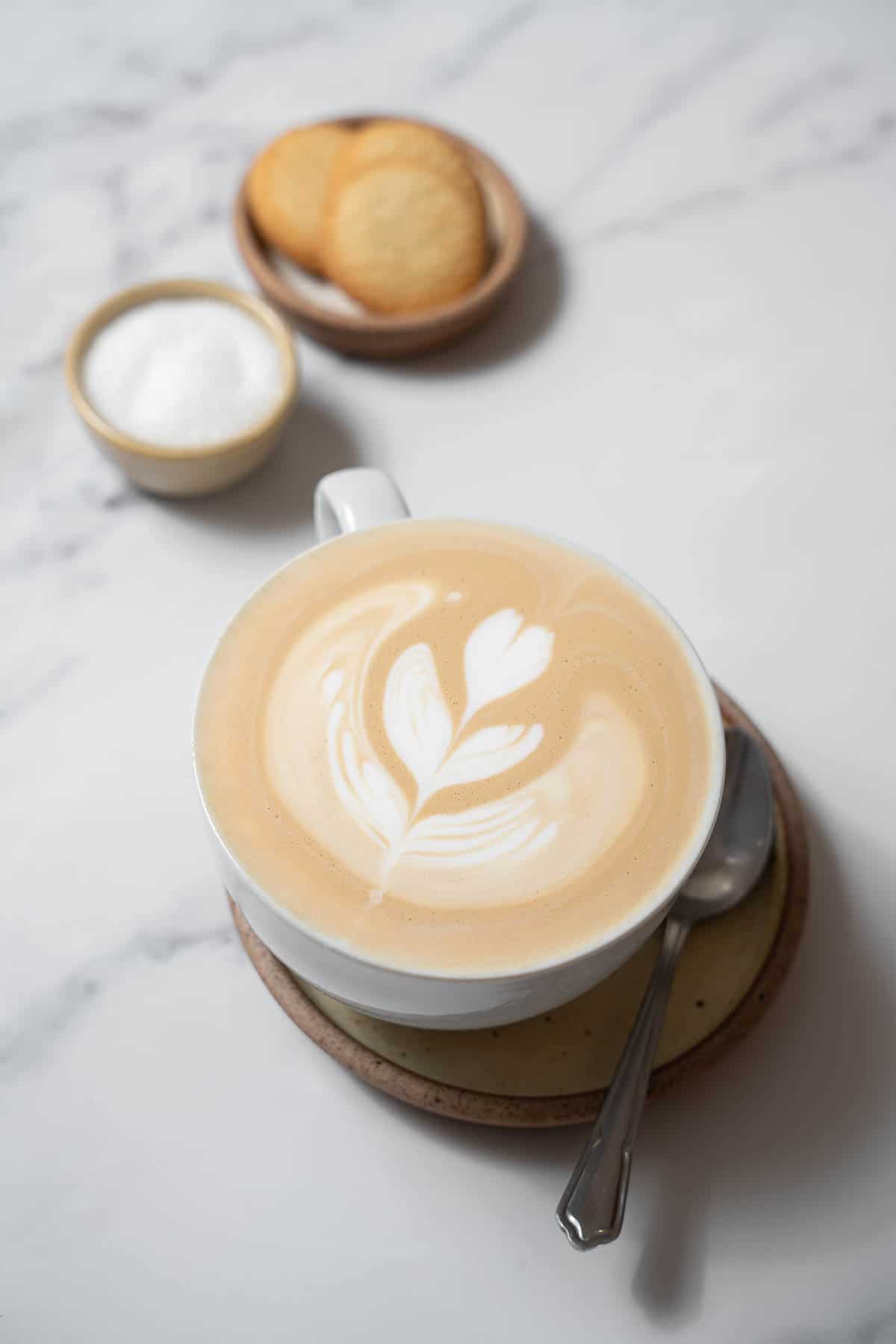
Jump to:
Introduction
Literally speaking, café con leche is coffee (café) with milk (leche). If you're trying to recreate it at home, you might think you can just brew up a cup of American filtered coffee and add a splash of 2% milk. But you would be mistaken.
To have the true café con leche experience, you'll have to use a shot of espresso. Filter coffee will not work. Second, the leche is steamed milk, which has its own distinct flavor. In Spain (and throughout Europe), most milk is Ultra High-Temperature Pasteurized, meaning it's shelf-stable and doesn't need to be refrigerated before opening.
If you're used to "fresh" milk (probably High Temperature Short Time Pasteurized), you might have noticed a slight difference in taste. But whether you love it or hate it, it makes Spanish café con leche unique.
Ingredients
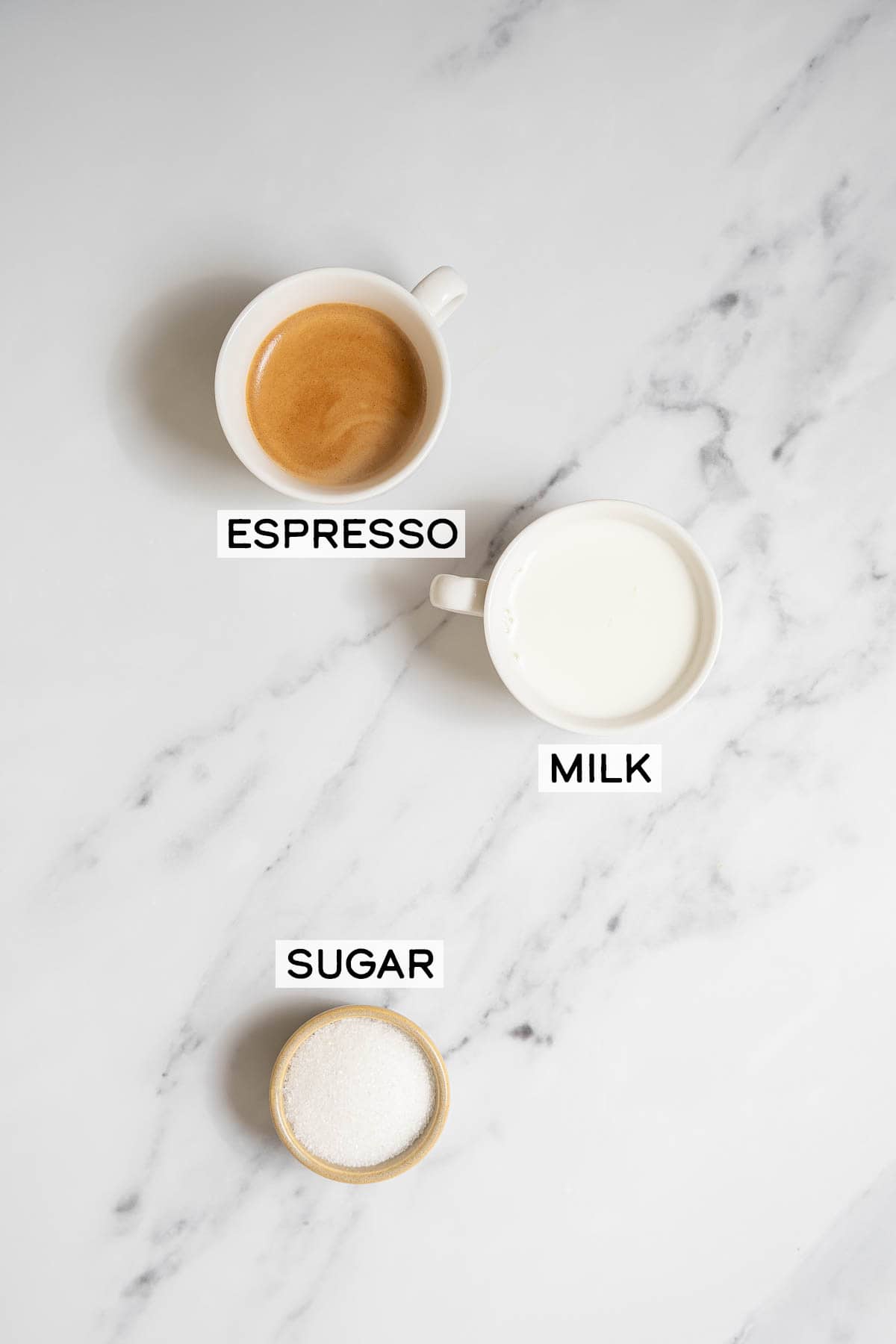
Wondering what you need to make a delicious café con leche at home? Fortunately, you only need a handful of very simple ingredients!
- Coffee Beans: For nearly a hundred years, Spaniards have been enjoying torrefacto beans instead of the higher quality, better flavored arabica beans. Torrefacto beans are coated in 15-20% sugar, which burns during the roasting process, and creates a very strong, burnt, acidic coffee which some people love. Feel free to use either torrefacto, arabica, or a mezcla (mixture) of the two.
- Water: Whenever you're making coffee, be sure to choose cold or room temperature filtered water for the best flavor.
- Milk: Throughout Spain and the rest of Europe, shelf-stable Ultra High Temperature Pasteurized milk is most common, which tastes different than fresh, refrigerated milk. Either one tastes great!
- Sugar: This is optional, as the milk usually cuts most of the bitterness from the coffee. If you're brewing torrefacto beans, though, you'll almost certainly want to add some sugar to counteract its acidic, burnt flavor.
See recipe card for full information on ingredients and quantities.
Variations
- Types of Coffee Beans: Experiment with torrefacto, arabica, or a combination of the two types for different flavors.
- Don't have an espresso machine? No worries! Use a moka pot (stovetop espresso maker) to brew delicious, strong coffee.
How to Make
If you’d like to see the full ingredients and instructions, scroll to the bottom of the post for the printable recipe card.
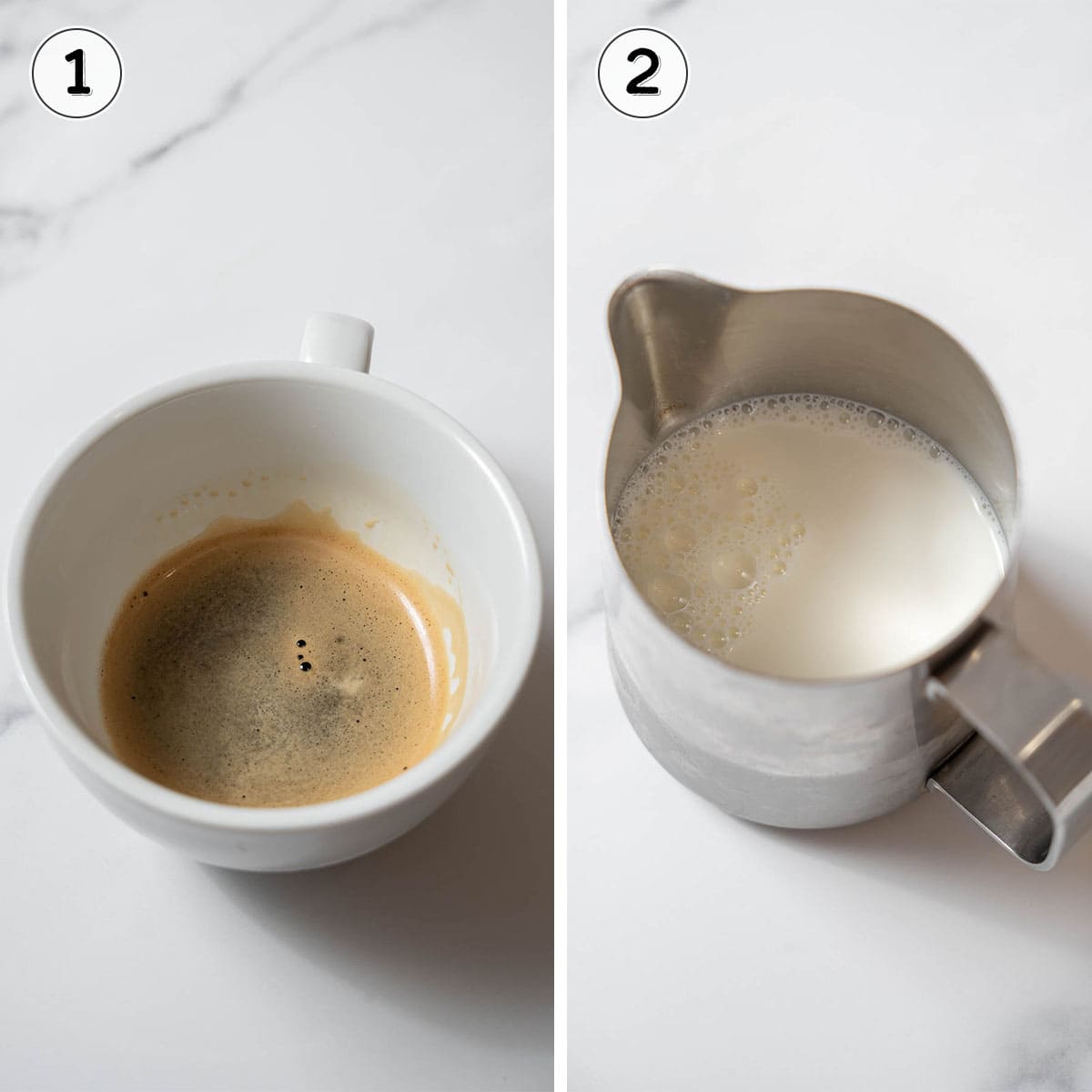
- Brew the espresso using an espresso machine or moka pot.
- Steam the milk by heating it to 155-165°F (68-73°C) on the stovetop, in the microwave, or with the steam wand on an espresso machine.
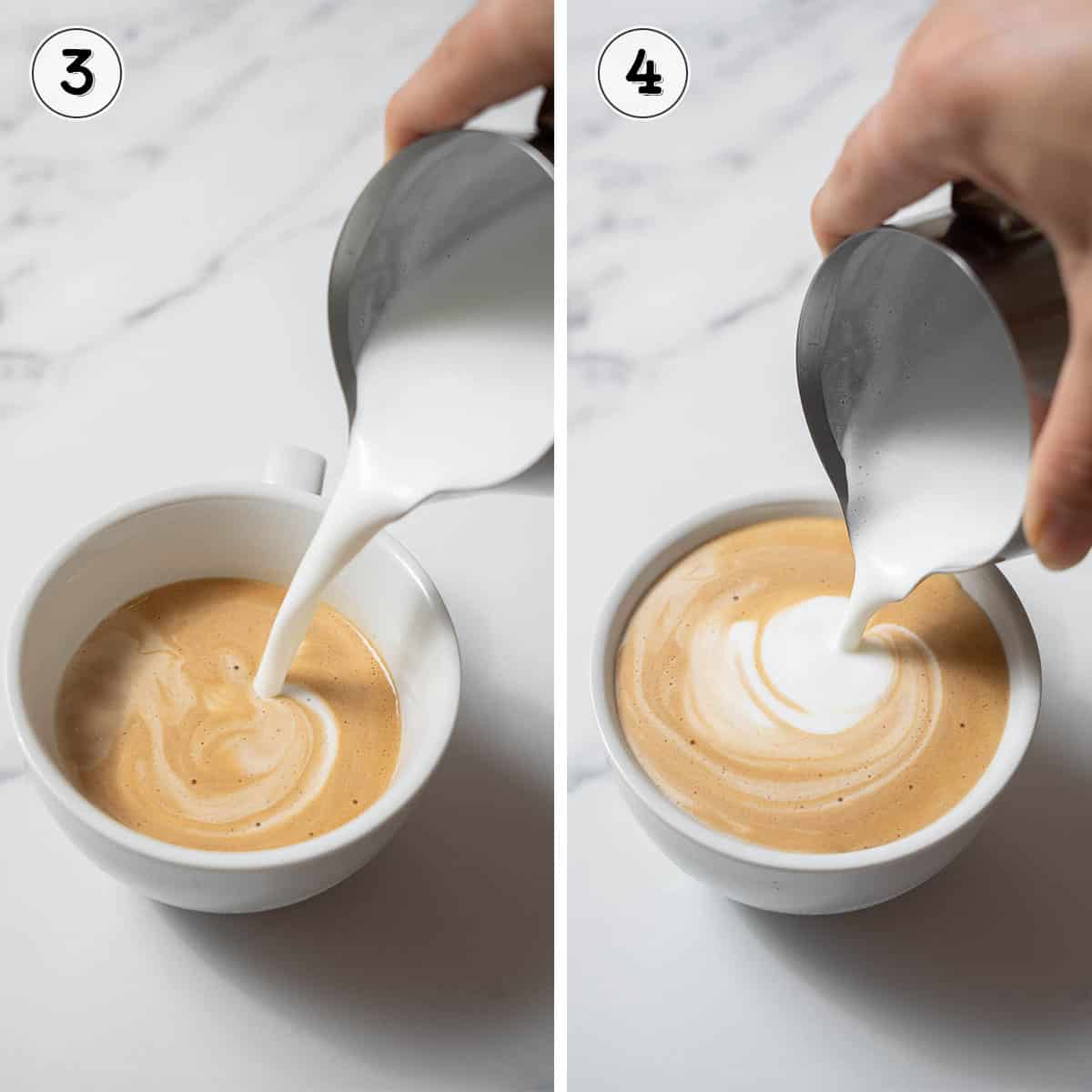
- If desired, froth the milk until it's doubled in volume. You can use a handheld milk frother, French press, whisk, or steam wand to froth it.
- Slowly pour the milk into the espresso, creating latte art if desired.
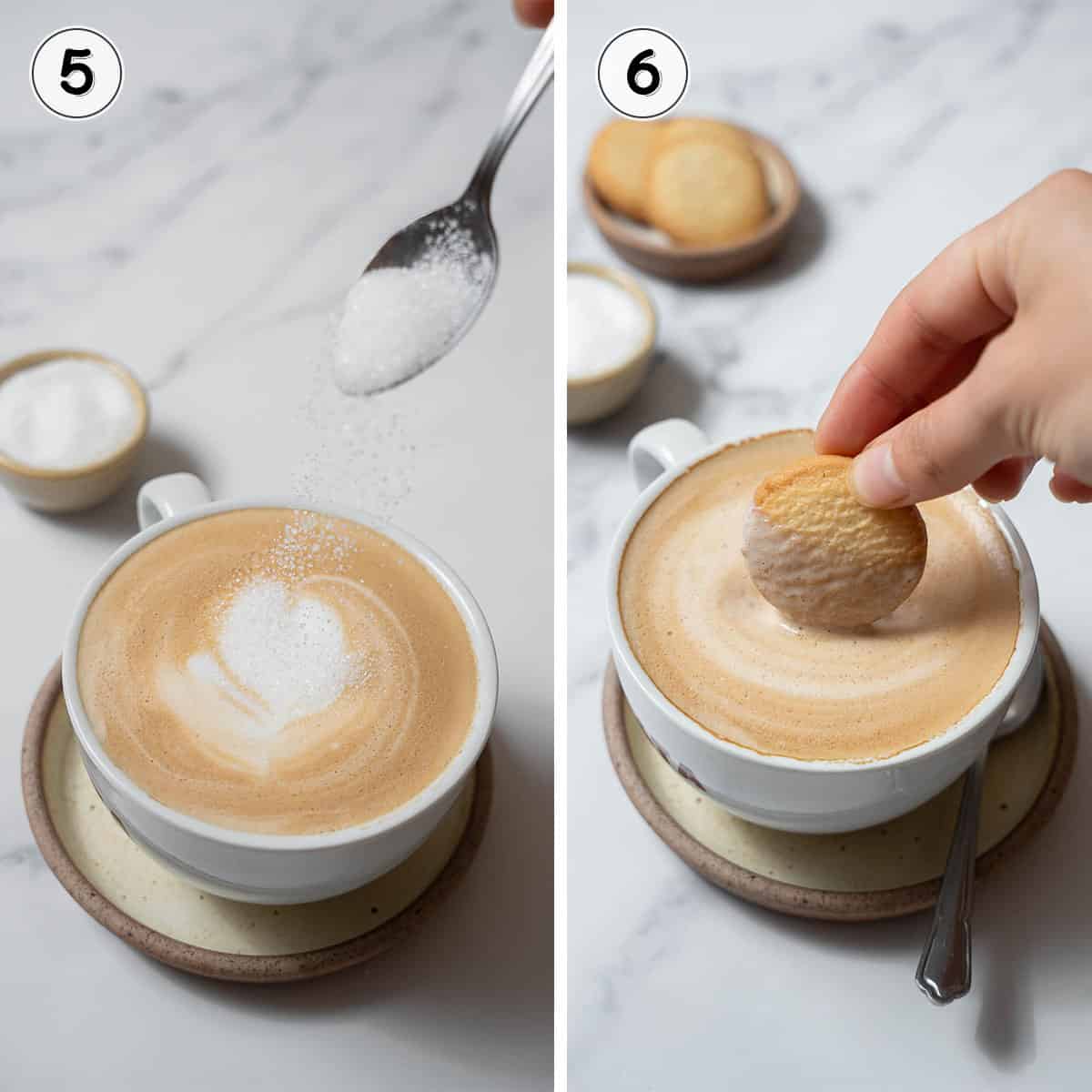
- Add sugar to taste. If you're like me, you might not want any sugar, since the milk cuts the coffee perfectly.
- Serve the café con leche right away and enjoy it with breakfast, a sandwich, or a sweet treat.
Recipe FAQs
Yes, café con leche is just coffee with milk, but it it has to have a 1:1 ratio of milk to coffee. Less milk than that would make it a cortadito, which is coffee cut with a little milk. Of course, you can add sugar to it if you'd like!
This coffee drink is so good because of its simplicity. The milk perfectly cuts the bitterness of the coffee and adds a subtle sweetness while allowing the rich aromas and flavors of the coffee to come through. It's the perfect way to start your day!
In Spain, anytime is a good time for a café con leche! It's most commonly enjoyed at breakfast with pan con tomate and other breakfast favorites, but is also served as an afternoon pick-me-up or as an alternative to dessert after lunch.
Serve
In Spain, café con leche is appropriate for any time of day. You might have it for breakfast with pan con tomate, a slice of Spanish tortilla, or a sugary pastry, mantecados, or churros. (If you can dunk it into your drink, even better!)
Café con leche is usually offered as an alternative to dessert for a three-course menú del día at lunchtime. It's also enjoyed with a piece of cake or a savory sandwich as an afternoon snack. And finally, you might find yourself sipping on one after a late-night tapas feast before you switch to cocktails.
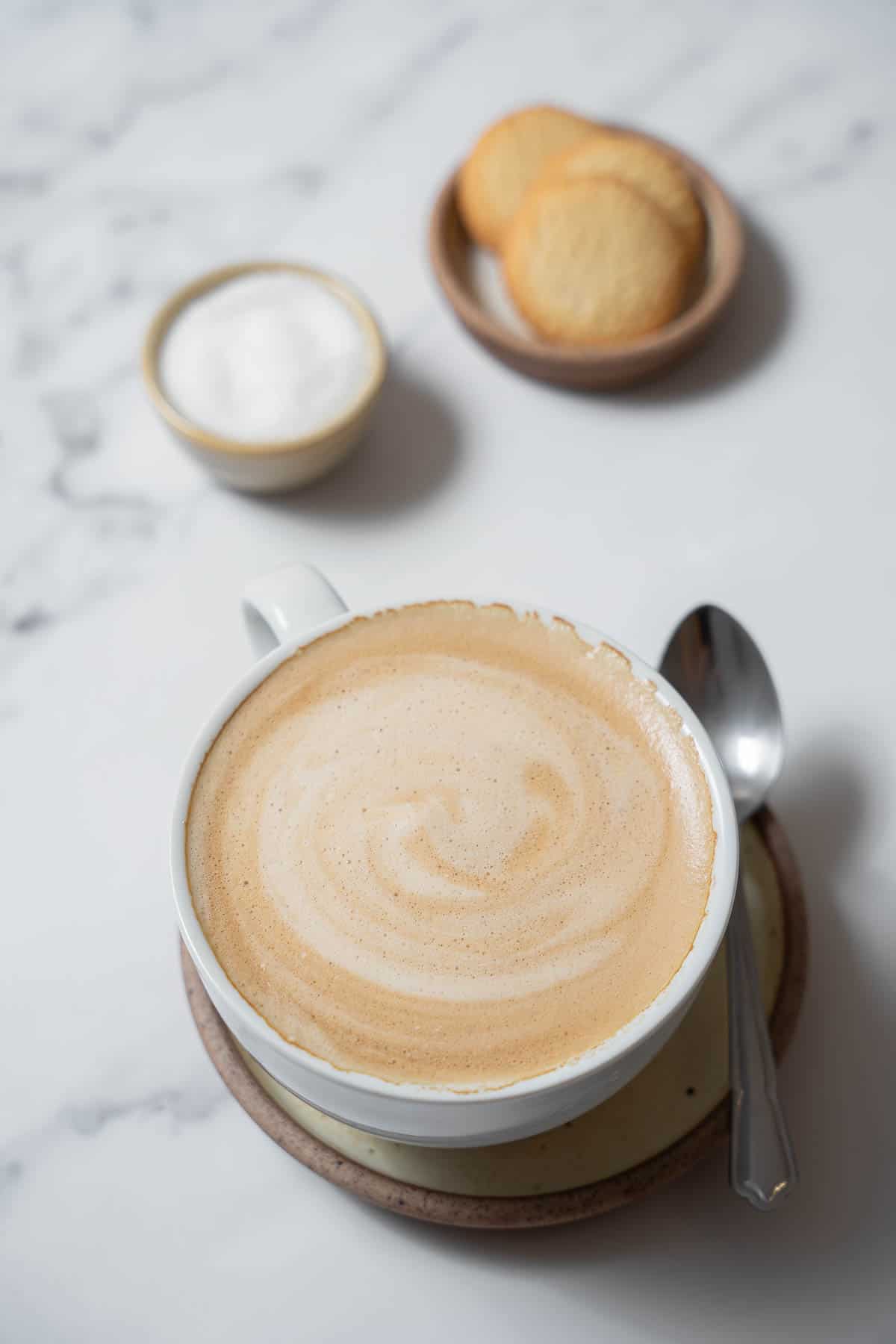
Store
Coffee doesn't taste good when reheated and served later, so make sure to grind, brew, and serve the coffee right away. If you frothed the milk, it will start to flatten with time as the air bubbles disintegrate.
Expert Tips
- Throughout Spain and Europe, shelf-stable, Ultra-High Temperature Pasteurized milk is more often used than fresh, refrigerated milk. This brings a different flavor, and is more authentic.
- Try using torrefacto coffee for an authentic flair. This popular type of Spanish coffee beans are coated in about 15% sugar and roasted until the sugar burns. Since their burnt, acidic flavor masks the coffee flavors, torrefacto is made from lower quality robusta coffee. Many people enjoy the strong, dark flavor of torrefacto coffee, but if you're used to arabica beans, you may not like it!
- Don't want to use 100% torrefacto beans? Try a mezcla (mixture) of torrefacto and arabica beans for a lighter taste. You can also use 100% arabica beans for a richer flavor profile.
- Grind the beans yourself right before brewing for the best flavor. If you don't have an espresso machine, use a moka pot (stovetop espresso maker) instead.
Other Spanish Drinks You'll Enjoy
If you liked this recipe, please share it with others!
Follow Spanish Sabores on Facebook, Pinterest, and Instagram for more recipes and travel tips.
If you've made and enjoyed this recipe, please leave a 5-star review!

Spanish Café Con Leche Recipe
Ingredients
- 1 fl oz espresso or extra strong brewed coffee 2 tablespoons or 1 shot
- 1 fl oz whole milk 2 tablespoons
- sugar to taste
Instructions
- Brew the coffee with an espresso or Nespresso machine. If you don't have one, use a moka pot or French press to brew some strong coffee.
- Scald the milk by heating it until it's steaming and hot but not simmering, about 155-165°F (68-73°C). This can be done on the stovetop in a small saucepan, in the microwave, or with a steam wand on an espresso machine.
- If desired, froth the milk with a steam wand, milk frother, whisk, or French press until it's doubled in volume.
- Pour the milk into the coffee and add sugar to taste. Enjoy immediately with a couple of cookies!
Notes
- For a more authentic Spanish flavor, use shelf-stable, Ultra-High Temperature Pasteurized milk instead of fresh, refrigerated milk.
- Try using torrefacto coffee for an authentic flair. This popular type of Spanish coffee beans are coated in about 15% sugar, which burns during the roasting process. Many people enjoy the strong, dark flavor of torrefacto coffee, but if you're used to arabica beans, you may not like it!
- Don't want to use 100% torrefacto beans? Try a mezcla (mixture) of torrefacto and arabica beans for a lighter taste. You can also use 100% arabica beans for a richer flavor profile.
- Grind the beans yourself right before brewing for the best flavor. If you don't have an espresso machine, use a moka pot (stovetop espresso maker) instead.
Nutrition
Photography by Giulia Verdinelli






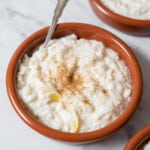



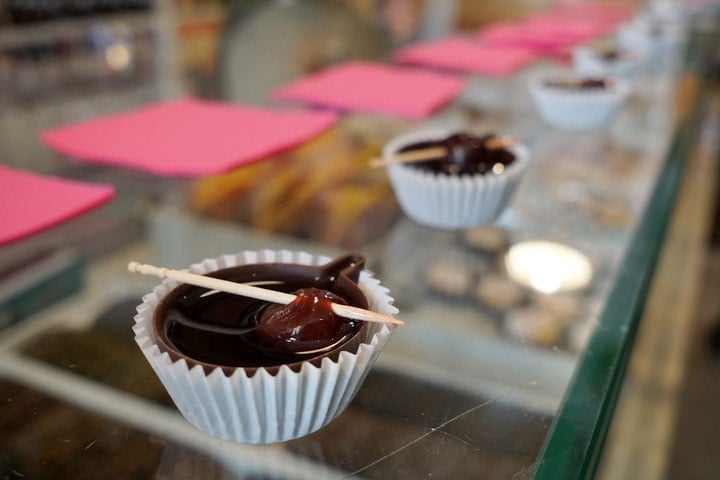

Michele Elliott
Hi - just got back from Spain and fell in love with cafe con leche! I have a Nespresso and Aeroccino - would I froth the milk or just heat it? Thank you!
Lauren Aloise
I would froth!
Mike
Step #2 SHOULD be "Scald your milk" (83 degrees C or 181 degrees F).
Lauren Aloise
haha true
Linda Stolinas
Love it! Thank you.
Valerie
When I lived in Andalucia, the Cafe con Leche was always served in a tall thin glass. A tourist might have it in a cup, but Spaniards and the locals who obviously lived in Spain, but were not Spanish, always were served Cafe con Leche in a glass. They fill the glass 3/4 full of hot whole milk. It must be whole milk. The glasses are aprox 8 oz to 9 oz, so that's about 6 oz of hot milk, plus a 1.5 oz shot of espresso. They set it on a white saucer with a small spoon and a packet of sugar. (I bought white hotel saucers on Amazon for my coffee glasses.)
The glasses are available from the yourspanishcorner website, but I think they don't deliver to the USA. They're called "White Coffee Glasses" even though they're clear because coffee with milk is a "white coffee." I found the glasses on Amazon listed as:
Duralex - Unie Clear Glass Tumblers, Set of 6 (250 ml. ( 8 1/2 oz. )) The kind of coffee served in Spainish Cafe con Leche, since the early 1900's, is called Torrefacto coffee; and it's unique to Spain because the beans are coated with a mist of sugar before roasting. No other kind of coffee will give you the same Spanish flavor. If you want the authentic flavor, you can buy a very popular coffee that's served in the Andalucian cafes: Catunambu Ground Mixed Torrefacto Coffee (aka Catunambu Cafe Molido Mezcla) from the LaTienda website or on Amazon.
Iris
This was really good!
Jamie Star
Looks sooooo yummy